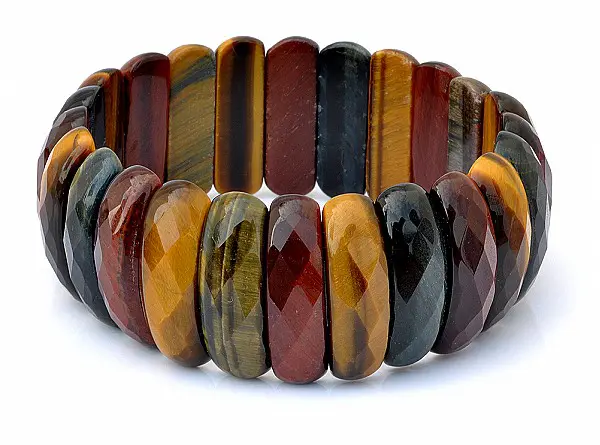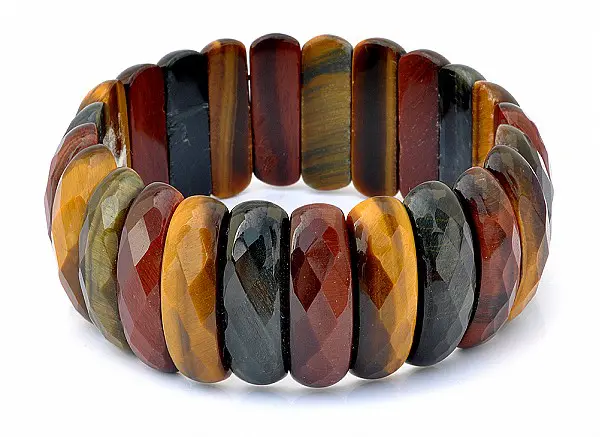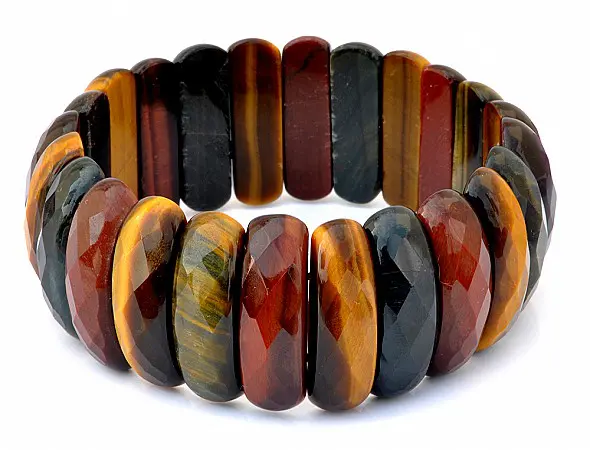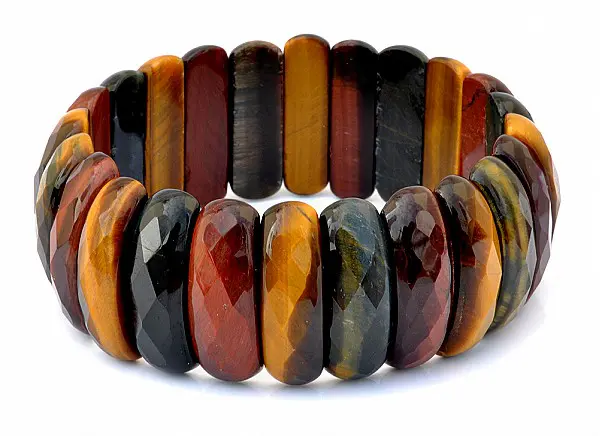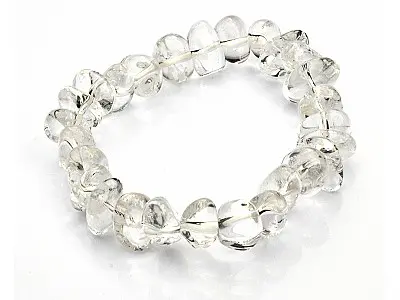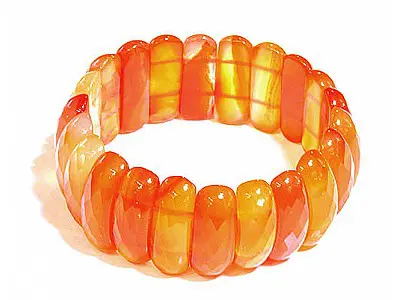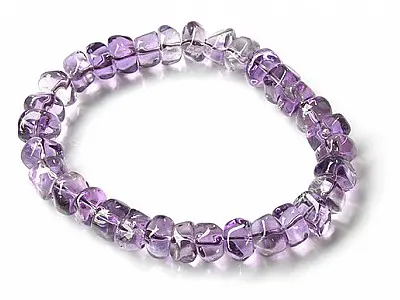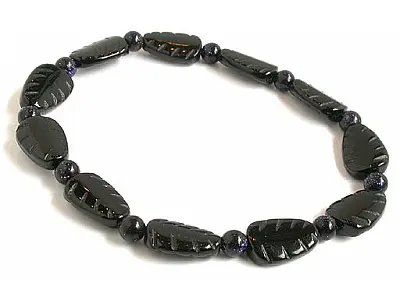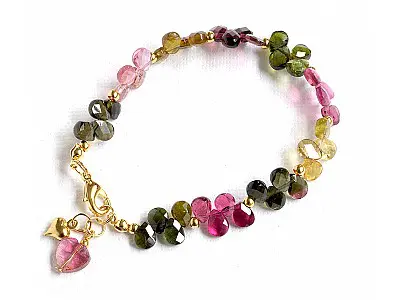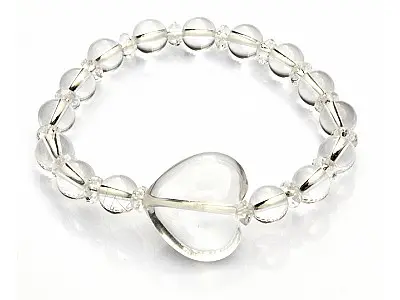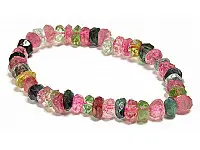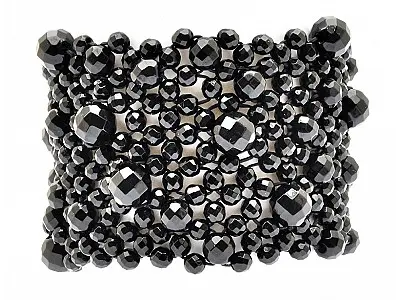Tiger Eye Faceted Lamel Bracelet
Tiger Eye Faceted Lamel Bracelet
The top red, yellow, and blue tiger eye thick material has clear lines and sharp tiger eyes. The cut face bracelet reflects the light more dazzling and generous when worn!
Tiger eye stone is the holy stone of the Indians. The parallel flowing tiger eye is shining with golden light and the light of wealth. It has strong vitality. Wearing tiger eye stone can promote the realization of wishes, inspire vitality, bring confidence and action, and improve Digestive system function.
Tiger Eye
Tiger Eye is a durable composite. It begins as the fibrous blue mineral called crocidolite, which is comprised of iron & sodium. Most of us known crocidolite as asbestos. The transformation begins when becomes imbedded between the fibers of crocidolite. This process will result in one of two gemstones. A blue stone called Blue Tiger Eye or Hawk Eye or the golden brown stone called Tiger Eye.
During the process, the asbestos is completely dissolved. But The takes on the fibrous formations and the blue color of crocidolite. This creates the parallel lines within the gem which gives it that ever shifting play of light and movement, the stone is so loved for. This is also known as chatoyancy. This gleam that rolls across its surface. Much like the eyes of a cat.
Even though the iron & sodium dissolve, traces of hydrated oxide of iron deposit between the crocidolite and, creating the golden color that is common to Tiger Eye. How much of this hydrated mineral is deposited will determine how Golden brown, red, green or blue, Tiger Eye and Hawk Eye will be. The rarer blue Hawk Eye will have only the slightest amounts.
The varying amounts of hydrated oxide of iron, actually cause several colors and mixes of color. When the color is a greenish gary, it is called cat-eye. A golden yellow reflection on a brown stone, is called Tiger Eye. If the stone is blue gray or bluish, it's known as Hawk Eye. Redish brown, or mahogany colored stones, are known as bull-eye or ox-eye
Tiger Eye is also a pseudomorph (from the Greek for false form). Pseudomorphs form when one mineral replaces another. Tiger eye is a replacement of crocidolite. Thus it is a pseudomorph of after crocidolite. The process is similar to that which takes place when replaces wood to produce petrified wood.
Faceted
Facets are flat faces on geometric shapes. The organization of naturally occurring facets was key to early developments in crystallography, since they reflect the underlying symmetry of the crystal structure. Gemstones commonly have facets cut into them in order to improve their appearance.
Of the many hundreds of facet arrangements that have been used, the most famous is probably the round brilliant cut, used for diamond and many colored gemstones. This arrangement of 57 facets was calculated by Marcel Tolkowsky in 1919. Slight improvements have been made since then, including the addition of a 58th facet (a culet) on the bottom of the stone. Since this is calculated to show maximum brilliance, round diamonds are rarely cut in any other arrangement, although recently the Princess cut is becoming popular. Other cuts, including "rose" cuts, are most typically found in antique jewelry. See diamond cuts for an in-depth discussion and diagrams of various shapes and ways of cutting faceted stones.
The art of cutting a gem with facets is a very precise activity. The aim with a faceted cut is to produce an article that sparkles with internally reflected light, and that shows off the "fire" of the stone. Accordingly, only transparent or translucent stones are usually faceted.
The angles between each facet are precisely calculated. As the aim is to maximise the effect of the internal reflections, these angles depend on the refractive index of the material. This means that although the name and general shape of a particular cut may be the same between different materials, the actual angles will be slightly different, for the maximum effect.
Thus, although cubic zirconia and rock crystal may look similar to diamond, and all can be cut in a round brilliant cut, the angles must be different to produce the same optical effects. Additionally, as diamond has a refractive index significantly higher than the other natural transparent stones, it can have a much greater sparkle than other materials.
While some facets can be cut by cleavage, specialised machines are used for cutting arbitrary facets. These consist of two main features:
a flat abrasive, usually diamond dust of precise size bonded onto a metal disk (called 'laps') or carried by an oily fluid on a smooth metal or ceramic disk, and
a system for holding a stone onto the disk at a precise angle and position.
This usually requires the stone to be attached to a holder or dop, which is then placed in an indexed vice. This allows progressively finer abrasives to be used without disrupting the orientation of the stone. The final abrasive must be smaller than the wavelength of light, so that the scratches it creates are invisible. Modern machines tend to have indexed gears for moving the stone, so that rotating the stone to cut the next facet can be more precisely controlled.
An older machine called the jamb peg faceting machine used wooden dop sticks of precise length. By placing one end into one of many precisely located holes in the jamb peg, the other end, with the stone, could be precisely placed onto the lap. These machines took considerable skill to use effectively.
Much less commonly, faceters use cylindrical machines, which leave concave facets. This technique is most noticeably used around the gem's girdle.

